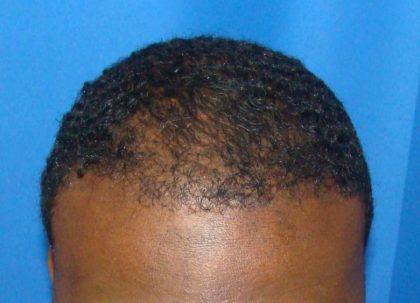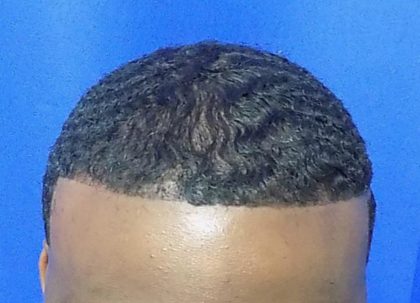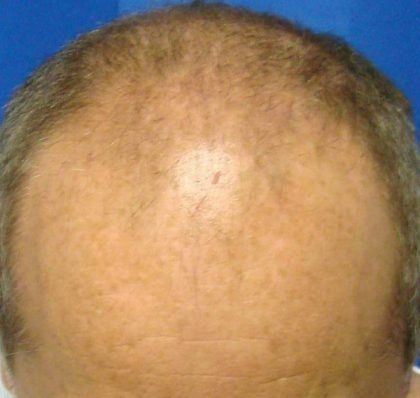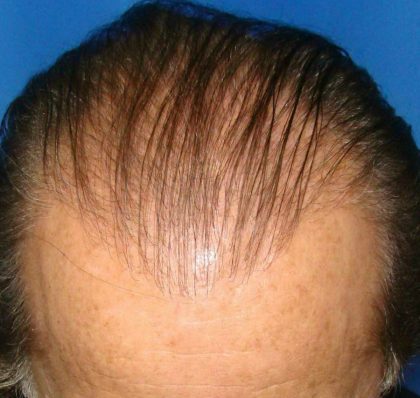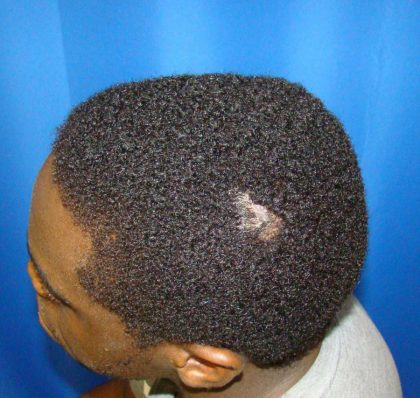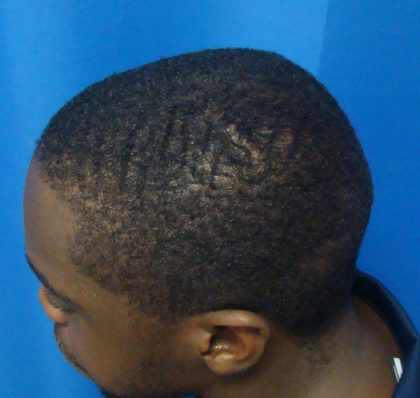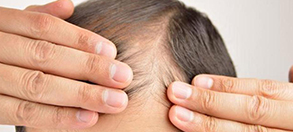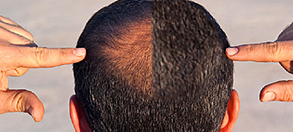
The answer to that question is a resounding yes! Hair transplants are indeed possible for people who have curly hair. Previously, hair transplant surgery was very challenging for people with curly hair, including African-American, Middle Eastern, some Hispanic, and other ethnic groups. Results were mixed; transection rates were high, and graft survival rates were low. As a result, patient satisfaction suffered.
Today’s Hair transplant surgery can handle all types of hair curvatures and textures for both men and women, particularly in the hands of an experienced hair transplant physician such as Dr. Goran A. Jezic. The procedure is a bit more complex and precise than straight hair transplants, but the appearance of a thicker, fuller head of hair is still very much achievable. The main reason why curly hair is harder to handle is that hair shaft transection (the accidental cutting or harming of the hair bulb) is more likely to occur during the process.[1] Studies have shown that an experienced hair restoration surgery team that uses the right technology and punches designed for curly hair can significantly reduce the transection rate and produce a great result to replace the hairline and improve one’s self-image effectively.[2]
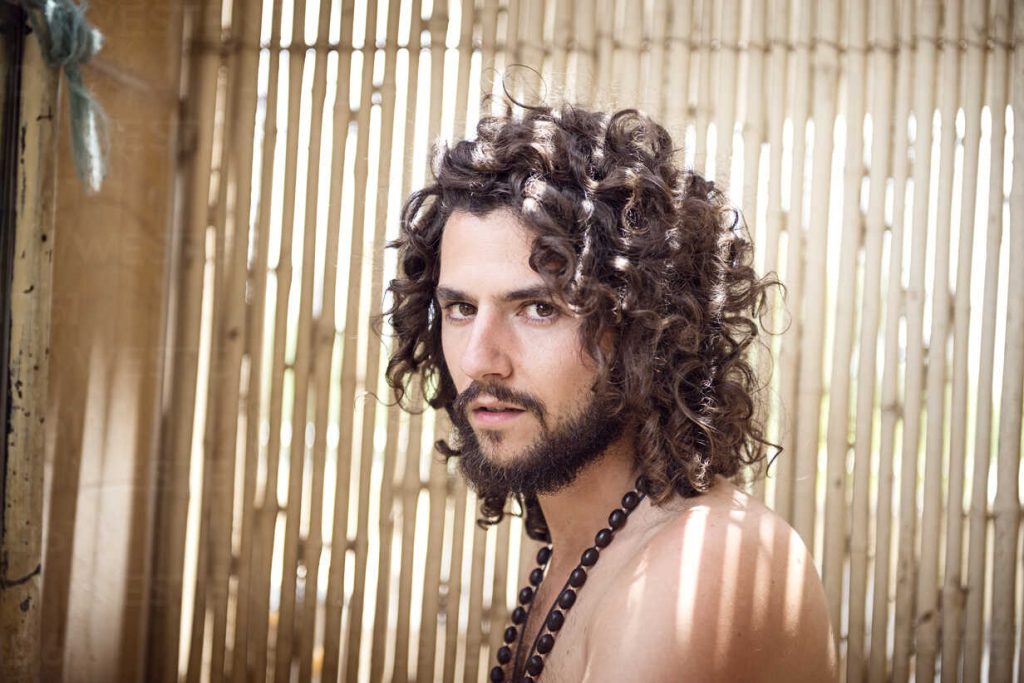
Dr. Goran Jezic’s Houston Hair Transplant Center is the destination for all your hair restoration concerns. We’re proud to unlock the potential that our patients hide from the rest of the world, whether it be through hats, scarves, hoodies, hair systems, extensions, or hairpieces.
Since curly hair is harder to transplant compared to straight hair, you must ensure that your surgeon is skilled and experienced. The Houston Hair Transplant Center is home to Texas’ resident hair experts specializing in follicular unit extraction (FUE) technology. Dr. Jezic is double-board-certified and brings over two decades of experience, including over seven years of hair transplant expertise, to provide excellent, fulfilling hair restoration to all his patients.
Click here to schedule your consultation, or call us now at (713) 864-2300.
What Is Hair Transplant Surgery?
Hair transplant surgery, or follicular unit extraction (FUE), is a technique that takes hair follicles, or grafts from a donor site to the thinning or balding areas, referred to as the recipient site. Each graft consists of one to three hair follicles. Hair transplantation has also been successfully used to correct androgenetic alopecia (male pattern baldness), cleft lip scars, post-burn or surgical scars, and vitiligo.[3] FUE is the ideal hair transplant procedure for patients looking to restore their curly hair. Studies have shown that hair transplant surgery captures the benefits of multiple available restoration techniques and avoids traditional disadvantages associated with Follicular Unit Transplants (FUT), also known as strip surgery.[4]
Causes of Hair Loss:
- Genetics
- Hormones
- Stress
- Hairstyles and treatments – cornrows, tight pigtails, traction alopecia (gradual hair loss, caused primarily by pulling force being applied to the hair)
- Medications and treatments
Before and After Photos
Benefits of Curly Hair Transplant Surgery
- Enhanced appearance
- Increased confidence
- A permanent solution to hair loss
- Prevents balding
- Minimal maintenance
- Requires fewer strands of hair to cover the balding area
- Fewer grafts mean less trauma, shorter operating time, and quicker recovery
- Minimally invasive–no stitches or sutures required
- Yields more voluminous results
- Appearance of a thicker, fuller head of hair
Candidates
The ideal candidate for hair transplant surgery would be somebody with curly hair who has experienced hair loss.
Candidates should have healthy hair on the sides and back of the head, which is the donor area. Both men and women can be candidates for hair transplant surgery. However, female hair loss can be caused by various factors, including, but not limited to, hormonal imbalance, pregnancy, menopause, stress, and other factors. There are many reasons for hair loss in patients, including genetic male and female pattern baldness, primary inflammatory and infectious scalp dermatoses, and traumatic hair loss.[5]
Do not seek a hair transplant if you have:
- Diffuse unpatterned alopecia (DUPA) or Alopecia areata
- A diseased donor supply
- Low hair density
- Autoimmune conditions
- Major health issues and disorders.
Personal Consultation
You will want to arrange a consultation with Dr. Jezic’s office specifically so that you may discuss your medical history, hair loss, and whether you are the right candidate for hair transplantation. Together you will discuss your goals and expectations and develop a strategic plan for your new hair and determine what techniques will be implemented.
Click here to schedule your consultation, or call us now at (713) 864-2300.
Preparation
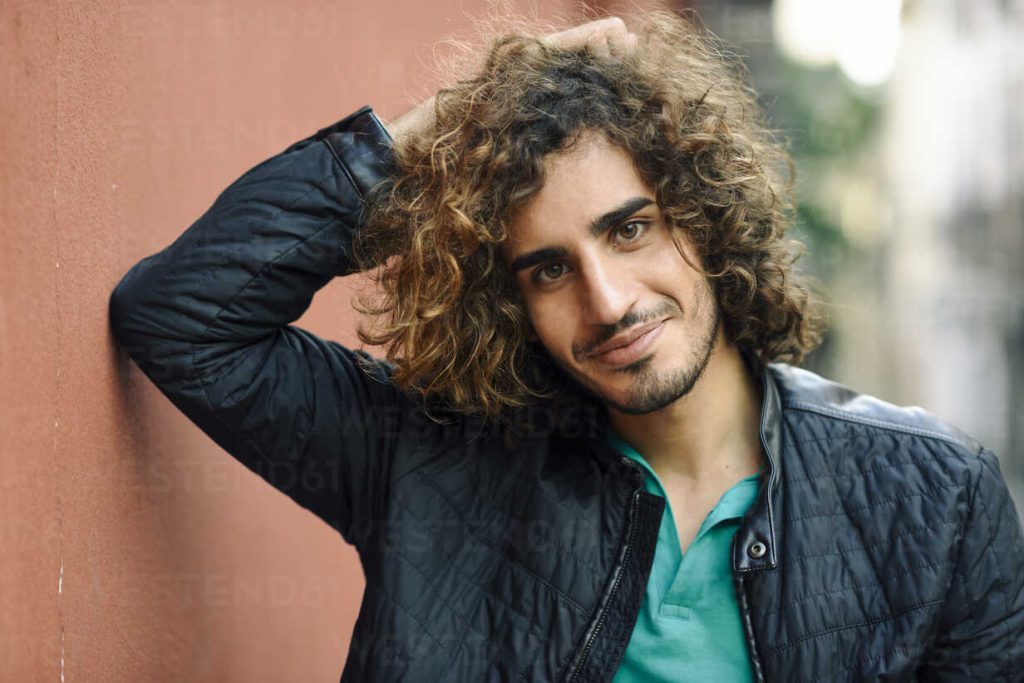
Dr. Jezic will go over any preparations you need to make for your procedure during your consultation. It’s advised that patients refrain from smoking for a week, among other precautions, leading up to transplants to ensure the best results.
Dr. Jezic will determine the number of grafts required, which will determine the length of your surgery. He will also determine whether to utilize the ATERA or NEOGRAFT FUE Technology for your procedure. He will also determine whether to administer PRP during the process.
Procedure
- Dr. Jezic draws the hairline.
- He administers the anesthesia.
- Dr. Jezic and his team will harvest the follicular units from the back of the head using micro punches under 3-5x magnification.
- Dr. Jezic and his assistants will carefully place the extracted hair onto the desired area.
Recovery

For up to a week after the procedure, the donor area may be sore, or Patients may experience some numbness in the donor area. You can also expect moderate swelling and redness during this time. Patients should start gently shampooing the recipient area two days after the surgery – this is important as it prevents scabs from forming. If scabs do form and are left to bond to the hair shaft, the newly transplanted hair follicles may be lost. Dr. Jezic may prescribe post-operative medications to ease your discomfort. Generally, it’s best to take it easy and avoid strenuous activities and workouts for at least a week to ten days.
Most patients can return to work and resume full activities the day after their hair transplant procedure. Make sure to follow any specific aftercare instructions from Dr. Jezic.
Results
FUE results in permanently recreating natural-looking heads of hair. However, during the first few weeks after your surgery, almost all of the transplanted hairs will fall out due to something called shock loss. Shock loss occurs when the hairs are traumatized by their relocation. Within four months, you can anticipate new hairs to start growing from the treated area and continue to thicken over the next six to nine months.
Hair Transplant Techniques
ATERA FUE
ATERA FUE is a state-of-the-art patented technology that automates and lubricates the follicle harvesting process providing the most efficient, least traumatic harvest of each follicular unit resulting in a faster recovery and quick return to your active life.
NeoGraft
NeoGraft is an automated device that facilitates the harvesting of follicles during a Follicular Unit Extraction (FUE) procedure.
Facial Hair Transplant
A facial hair transplant is a treatment that gently harvests healthy hair follicles, delineates them by texture and viability, then transports them to the face for natural growth.
Cost of Hair Transplant Surgery in Houston
You can’t put a price on your future happiness, but you can sure get an estimate! Call 713-864-2300 to contact us and schedule a consultation. Virtual consultations are available.
If you’ve enjoyed learning about curly hair transplants, we’d like to recommend you read the Houston Hair Transplant Center’s Blog. You’ll find great content like FAQs, pop culture pieces, advice, lifestyle articles, and much more. We look forward to growing our relationship with you.
FAQ
Are Hair Transplants an Option for People With Curly Hair?
Yes, hair transplants are an option for people with curly hair. We have seen a multi-fold increase in the number of African American, Hispanic, Middle Eastern, and Caucasian clientele with curly hair.
What Is a Hair Transplant?
A hair transplant is a minor surgical procedure performed under local anesthesia, where hair follicles are taken from a donor site and taken to the thinning and balding recipient site.
What Makes a Curly Hair Transplant Different From a Regular Hair Transplant?
The curly hair follicle and strand structure differs from straight hair and often takes on a spiral shape from the tip to the root. To keep the design completely intact, the transplant surgeon must handle these hairs with extreme care when extracting and implanting them. Special punches and the ATERA FUE technology are used for this procedure.
What Causes Someone to Lose Their Hair?
Multiple factors come into play when it comes to hair loss, such as age, genetics, or hormonal changes.
Do Hair Transplants Hurt?
While no surgery is totally painless, with the aid of anesthesia and post-op pain medication, hair transplant patients experience brief levels of discomfort.
How Long Do Hair Transplants Last?
Hair transplants last a lifetime. However, results may not be immediately noticeable until about six months after surgery. Patients will see their final results after about a year.
Are Hair Transplants Safe?
There is some degree of risk with any surgical procedure, but when performed by a qualified, board-certified surgeon, hair transplantation is quite safe.
What Are the Risks of Hair Transplants?
Risks of hair transplants include bleeding, infection, and scarring.
What Areas Is Hair Taken for Transplantation?
Hair Follicles are usually taken from the back and sides of the head. If not enough donor hair is present, follicles may be harvested from the patient’s arms or chest.
What Can I Expect During My Surgery?
The procedure can last several hours, and you may be required to have more than one procedure. Dr. Jezic also administers PRP during the procedure. Most patients can also expect to receive a local anesthetic in both the donor and recipient areas. The amount of pain during the procedure is mild, although discomfort may vary depending on your body’s tolerance.
Will I Be Able to Swim and Do Other Physical Activities With My New Hair?
It is advisable to avoid strenuous physical activities for at least ten days following your procedure. Dr. Jezic will provide you detailed post-op instructions. Your results are partially dependent on your compliance with these instructions. You can wash, cut, or dye it however you’d like when it’s fully grown.
References
- Noreldin A.A. (2018) How to Approach Donor Harvesting in Wavy Hair. In: Pathomvanich D., Imagawa K. (eds) Practical Aspects of Hair Transplantation in Asians. Springer, Tokyo. https://doi.org/10.1007/978-4-431-56547-5_25
- Kite, Amy MD; Lucas, Valentina S. PhD, ANP-BC Hair Transplant, Plastic Surgical Nursing: April/June 2015 – Volume 35 – Issue 2 – p 66-68 doi: 10.1097/PSN.0000000000000094
- Sharma, R., Ranjan, A. Follicular Unit Extraction (FUE) Hair Transplant: Curves Ahead. J. Maxillofac. Oral Surg. 18, 509–517 (2019). https://doi.org/10.1007/s12663-019-01245-6
- Bicknell, L. M, Kash, N., Kavouspour, C., & Rashid, R. M. (2014). Follicular unit extraction hair transplant harvest: a review of current recommendations and future considerations. Dermatology Online Journal, 20(3). Retrieved from https://escholarship.org/uc/item/1954f4vv
- Finney R.L., Avram M.R. (2019) Hair Transplant. In: Alam M. (eds) Evidence-Based Procedural Dermatology. Springer, Cham. https://doi.org/10.1007/978-3-030-02023-1_24
